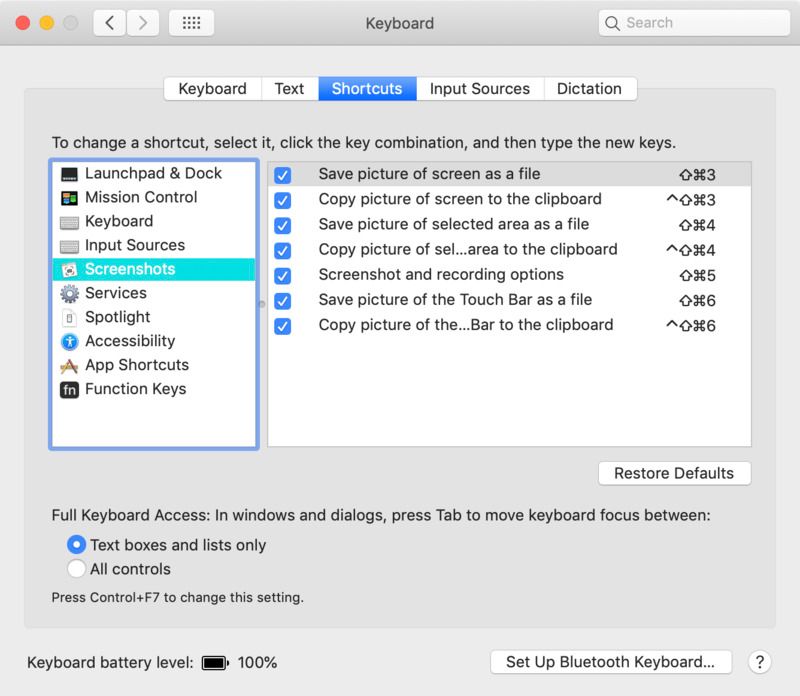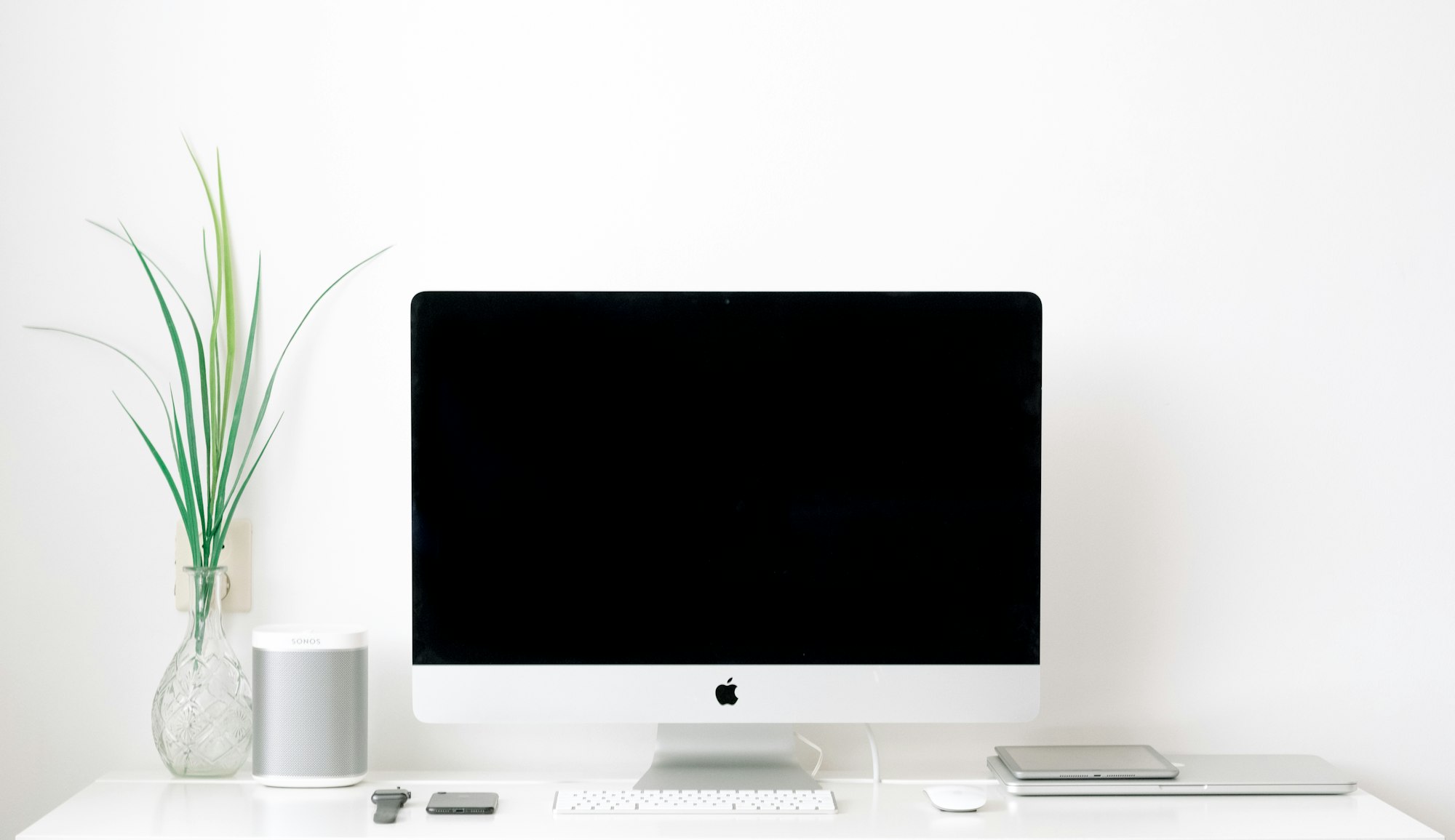Overview
This is a quick guide on the screen capture capabilities of your Mac including:
- How to remove the default drop shadow effect applied to screenshots of selected windows.
- How to change the location of where screenshots are saved.
- How to change the image file type to something other than
png. - Customize the keyboard shortcuts for taking screenshots.
The Screenshot App
If you need to grab a snapshot of your screen or capture some action with a screen recording, Mac comes with an app just for that - called Screenshot.
There are two ways to launch it:
- Launching quicklook with
Cmd + Spacebarand searching for "screenshot", or going into your Applications folder, then Utilities -> Screenshot.app. - Conveniently pressing
Shift + Cmd + 5on your keyboard.
Once launched, there are a number of options that you can choose from:

From left to right they are:
- Capture the entire screen.
- Capture a window.
- Capture a portion of the screen.
- Record the entire screen.
- Record a portion of the screen.
But you can use keyboard shortcuts for those options directly, without first launching the Screenshot app.
Keyboard Shortcuts
Using keyboard shortcuts tends to improve your workflow, and for each of the image capture features there is a default shortcut.
Here is a list for reference:
- Capture the entire screen:
Shift + Cmd + 3. - Capture a window:
Shift + Cmd + 4, thenSpacebar, then click on a window or the menu bar. - Capture a portion of the screen:
Shift + Cmd + 4, thenClick + Dragto select your screenshot area. - Capture the Touch Bar:
Shift + Cmd + 6.
Note: Those commands will take a screenshot and save the file as an image to the Desktop. To copy to the clipboard instead, press the Control key while pressing any of those key combinations. Useful for pasting the screenshot directly into an email, text editor, etc...
Note: To view or change the default keyboard shortcuts head over to System Preferences -> Keyboard -> Shortcuts -> Screenshots.

Custom Preferences
Mac apps store user preferences in a preferences file, usually recognizable from the plist extension. In Terminal, we can use a built in utility called defaults, that allows us to quickly read and write to those preference files.
The preferences file for the Screenshot App is com.apple.screencapture and we can read it's contents by pasting the following command in the Terminal app:
defaults read com.apple.screencaptureInstead of the read command we can use write to add our custom preferences to the preferences file.
Note: When modifying a preference file, we may need to restart the app that is referencing it. In the case of the Screenshot app we can use the following command:
killall SystemUIServer
To run both commands on one line we can simply append the latter to the first command using && . This instructs to run the second command once the first one is done.
defaults write com.apple.screencapture [preference] && killall SystemUIServer
Following are some preferences we can customize.
Change the Location where Screenshots are Saved
By default, screenshots are saved to the Desktop. We can override that with the following command (make sure to replace the path with the one of your folder of choice):
Note: You can simply drag and drop your folder from a Finder window onto the Terminal window and the full path will be added where your cursor is located.
defaults write com.apple.screencapture location /path/to/folder && killall SystemUIServer
Swap /path/to/folder with your own folder.
Remove the Drop Shadow Effect
By default, screenshots of a window have a drop shadow applied. It looks neat but you may want to disable it.
defaults write com.apple.screencapture disable-shadow -bool true && killall SystemUIServer
Note: -bool stands for boolean and, in programming, it defines a value that can be True or False. We can use this as an On/Off switch. The argument being disable-shadow is slightly counter-intuitive but if we set it's value to true, the disable-shadow will be On, therefore the shadow will be disabled...
Change the Screenshot Output File Type
The default extension used for screenshots is png but you can change this to: jpg, tiff, pdf, bmp, or pict .
defaults write com.apple.screencapture type png && killall SystemUIServer
Swap png with any other available image format.
Additional Resources
Official documentation for the Screenshot App:

Explanation of preference files and the defaults system:
https://developer.apple.com/documentation/foundation/userdefaults
Reference for the defaults commands:
https://ss64.com/osx/defaults.html
There is a screencapture utility that can be accessed from the Terminal. Use that instead of the app if writing a program:

